|
Spoiler Alert
Most crime fiction fans will know by now that Inspector John Rebus is, courtesy of his creator Ian Rankin, set to return in November in Standing In Another Man’s Grave.
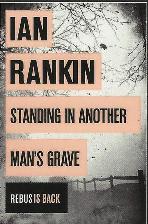
Thanks to a mole I planted as a sleeper agent in publishers Orion some years ago, I have read the new Rebus novel already and so am determined to reveal something crucial about it to the thousands of salivating Rebus fans waiting for publication day.
It’s very, very good.
Lord Help the Mister…
The latest Scandinavian import to these beleaguered shores is Some Kind of Peace by Camilla Grebe and Åsa Träff from publishers Simon & Schuster.
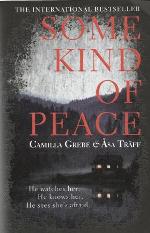
Confusingly, the book is promoted with the words ‘No.1 Swedish bestselling sisters’ which for several minutes had me wondering how many sisters were sold each year in Sweden, and why hadn’t I heard of this strange trade before now?
The Name’s Bond…(not Fleming)
I am not one who normally indulges in name-dropping – as I said to the charming Duchess of Cambridge only the other day – but when the subject of the covers of the James Bond books came up, I automatically thought of the late Richard ‘Dickie’ Chopping, who designed the famous dust jackets for many of Ian Fleming’s first editions.
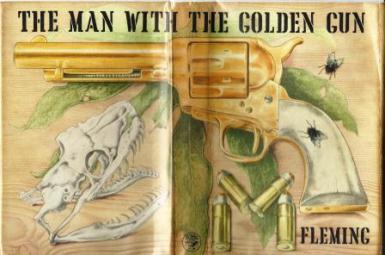
I cannot say that I knew Dickie well, but we did share a local pub for several years (The Black Buoy in Wivenhoe, Essex if you have to ask), where I was introduced to him by my neighbour Francis Bacon the artist (yes, that one), but I had long admired his Bond cover paintings.
The reason that the James Bond books and their covers came to be top of mind was due to the imminent reissue of the entire Bond canon as Vintage Classics by Random House. I have absolutely no problem with that and all the reissued titles come with Introductions by interesting and intelligent writers, indeed the two volumes I have seen contain excellent introductory essays by Alan Judd (Casino Royale) and Sam Bourne (Dr No) and I understand that Andrew Taylor and Giles Foden are also lined up for Introduction duty.
Some might be surprised at the need for a reissue of such classic titles, but I have recently met a (published) South American novelist and member of the International Crime Writers’ association who had no idea that the films he had grown up with were based on books! So perhaps every new generation of readers needs reminding of the source material, and for those now genetically programmed to electronic gadgets they are also appearing as e-books.
But – and here comes my niggle (and you knew one was coming) – if the exercise is to promote the written novels, why on Earth is the name of the author missing from the new style covers?

To be absolutely honest, it was Professor Barry Forshaw who pointed this out to me, for I am ashamed to say I hadn’t noticed that Ian Fleming’s name had been airbrushed from the front of the books. I admit that I was distracted by the fact that the new cover for The Spy Who Loved Me bore a suspicious resemblance to Raymond Hawkey’s iconic “bullet holes” cover for the paperback of Thunderball.
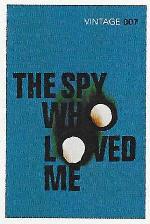 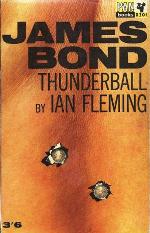
Although I am glad to see the new reissues, I shall remain firmly retro and stick with my much-loved copies of my Great Pan editions.
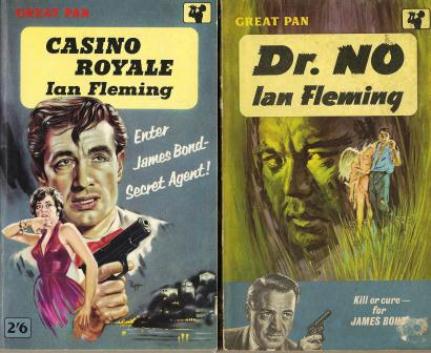
Every Day’s A School Day
The splendid thing about crime fiction is that there are always new authors to try; sometimes they come recommended by other discerning readers, sometimes one finds them through pure serendipity. In the case of the work of Shelley Smith it was, for me, a mixture of the two.
Quite by chance, whilst researching something completely different, I came across a copy of her 1961 ‘novel of suspense’ The Ballad of the Running Man, which the late, great critic Julian Symons described as a ‘portrait of somebody pushed to murder by personal weakness and the need for money, rather than by inherent viciousness.’
Little seems to be known about Shelley Smith, except that it was a pen-name for Mrs Nancy Hermione Bodington (1912-1998), whom Symons likened to a cross between Mary Roberts Rinehart and Francis Iles – good company to be in – and whom one reviewer called, rather generously, ‘the English Patricia Highsmith’ although the Shelley Smith books are far more genteel.
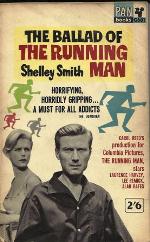
The heyday of Shelley Smith’s career seems to have been from 1942 to the early Sixties, though most of her work has been out-of-print for over 30 years, and by all accounts The Ballad of the Running Man was not her finest achievement. It has, though, much to commend it, not the least being a central character who is a hack crime writer, churning out six novels a year.
When his middle-class lifestyle outstrips his mediocre income, the writer turns to his publisher but, as the book notes: ‘Publishers are notoriously not soft-hearted persons (they can’t afford to be, with authors preying on their good nature daily).’ And then Rex Buchanan – the shiftless, greedy, talentless hack – comes up with the idea of an insurance scam which is far too good to waste in one of his potboilers and determines to put it into practice by faking his own death, not once but three times. This elaborate scheme needs the co-operation of his not-too-bright wife, but then Rex isn’t the sharpest knife in the kitchen either and of course it will all end in disaster, because it has to. (Though not if Patricia Highsmith had written it.)
As a crime novel it is rooted in the values of the middle-class England of 1960 (though these are not a particular theme of the book) and some of the forensics of the plot are naïve if not laughable, but the novel does have pace and a terrible inevitability for here is a couple who are not evil, just stupid and, at the end, remarkably cold, lonely and soulless without a working moral compass between them.
The Ballad of the Running Man was filmed in 1963 by Carol “The Third Man” Reed, starring Laurence Harvey and the wonderful Lee Remick. Yet despite a script by John “Rumpole” Mortimer, the film failed to set the world on fire and is today remembered primarily in a piece of movie trivia, as a poster advertising the film appears in the background of a scene from the much better-known British suspense drama Séance on a Wet Afternoon.
The Annual Cull
It is that time of year again when the groaning bookshelves of the many libraries here at Ripster Hall have to be thinned in order to make room for all the exciting new titles publishers will tempt me with in the Autumn.
I have decided to start the annual cull in the ‘Specials Room’ which usually closed to the public and off-limits to all but the most trusted staff and among the titles I will be saying farewell toinclude suchclassics as The Toff Goes Gay from 1951, Hands Up Miss Seeton from 1992, and the classic 1963 adventure Biggles Takes It Rough.
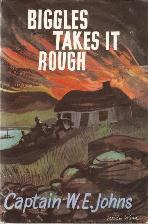
I will be sorry to see them go, but I simply have to make room for my special edition of the famous 50 Shades trilogy bound in hands-tooled, soft, soft leather…
New Frontiers
I have never claimed to be an expert on Romania. Indeed my knowledge of the country is scant since the days when part of it was known as Felix Dacia apart from the memoirs of Geoffrey Household and the historical spy stories of Alan Furst.
But I am rapidly being educated thanks to the work of my old chum Mike Phillips who is opening up new frontiers of crime-writing, both fiction and ‘true crime’.
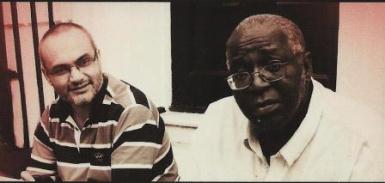
Together with Romanian historian and political scientist Stejarel Olaru, who is a respected authority on Romanian intelligence and security services, Mike has written Rîmaru, Butcher of Bucharest, a detailed reconstruction of the sensational crimes of Ion Rîmaru (murder and multiple rapes with allegations of cannibalism and vampirism), who terrorised Bucharest in 1971 before being caught, tried and executed by a seemingly disorganised but eventually efficient firingsquad.

Mike, or Dr Mike Phillips OBE, FRSL, FRSA as I should properly call him, is also championing Romanian crime fiction with the Profusion Crime imprint launched last year (as reported here in December 2011), and has written intelligent Introductions to their first three fiction titles: Anatomical Clues, Attack in the Library and Kill the General.
Should any reader be concerned that Romania might be an unknown foreign country for crime fiction, they should not be afraid as the very clever thing about the Profusion series is that the novels come with explanatory footnotes on the more idiosyncratic or unusual (for we insular Brits) aspects of Romanian life and society. I found these almost as fascinating as the novels themselves and learned a lot from them, not the least being that Palinka is the local plum brandy (usually home-made and I suspect to be treated with caution), that a ‘French-key’ is the Romanian expression for a monkey wrench, that Samarle – stuffed vine-leaves or cabbage – is the national dish and that Ardeal is the Romanian version of the Hungarian word for Transylvania.
There are also many more important, and poignant, references to the “times of sad remembrance” which describe the hardships of life under a communist dictatorship. I know that some readers are immediately turned off by footnotes in works of fiction, but here they are vital and educational, so anyone with any objections should get over them.

It is exactly 20 years ago that Mike Phillips and I, along with fellow writers Michael Dibdin and Philip Kerr, took part in an exercise at which I am fairly confident the word ‘Romania’ was not mentioned, when we were all recruited as fashion models to show off the latest styles of trench-coats and fedoras, which were seen by GQ magazine as the de rigeur apparel for the aspiring young crime novelist.
I have not seen Mike for some time, and sadly Michael Dibdin is no longer with us, but I think I can confidently say it was the first and last appearance on a fashion catwalk for all of us.
Hooray for Hollywood
I admit it. When it comes to crime writing awards these days, I have totally lost the plot. In the good old days, in the last century, there was a Gold Dagger given for best crime novel and a Silver Dagger for the second-best. For the best debut crime novel there was the John Creasey Award (which may or may not have been a ‘Dagger’) and, for a few years, there was the Last Laugh Award (definitely not a Dagger, rather a pen-and-pencil set) for comic-crime because that was thought of as a something of a persecuted minority when it came to the ‘serious’ awards. And that was just about it.
Nowadays it seems that a new shortlist is announced (after the obligatory longlist) every month and there are awards for actors, actresses, television shows and television characters (though not, I note, for scriptwriters), authors who are popular in libraries, authors who are popular without necessarily writing a book recently and even authors who haven’t actually written a book yet.
The latest slew of nominations was announced last month and among them some for the actual writing of books, but apart from the Gold Dagger for best crime novel and the Steel Dagger for best thriller (presumably the best crime novels are not thought thrilling enough….), the spotlight seems to be firmly on the acting profession.
As my predictions for crime-writing awards (i.e. for writing books) are notoriously always wrong, and as some good friends have been nominated this year, I shall refrain from commenting and possibly hexing their chances.
I have absolutely no connection with or vested interest in the ‘showbiz’ awards offered in the name of ‘crime writing’ and am very much in the Alfred Hitchcock school when it comes to how actors should be treated. Therefore, without scruple, or any really serious thought, here are my winners of this year’s glittering prizes.
Best Film: : Tinker Tailor Soldier Spy, by a country mile, despite being directed by a Scandinavian. Best Television: A toss-up between Sherlock and Whitechapel. International TV: presumably this category has been invented to let the Scandinavians win something, so I’m going for Homeland. Best Actor: Dominic West for Appropriate Adult. Best Actress: Claire Danes for Homeland, though I do have a soft-soft for Sofie Helin in the utterly bonkers The Bridge. Best Supporting Actor: It just has to be the marvellous Phil Davis in Whitechapel. Best Supporting Actress: surely Emily Watson in Appropriate Adult, though she’s not even nominated. Best Detective Duo: (and I am not making this category up) – Scott & Bailey.
Am I alone in thinking it is rather sad that there isn’t an award for script-writing or for adapting a book for the screen?
|
|
More from Tinsel Town
One author who had a turbulent relationship with scriptwriting in Hollywood was Dashiell Hammett, the godfather of the hard-boiled school of crime-writing and legendary for his relatively small output of only five novels between 1929 and 1932. Of these, The Maltese Falcon was filmed in 1931, 1936 and (famously) 1941; The Glass Key was filmed in 1935 and (famously) in 1942; and The Thin Man was filmed in 1934 and spawned five sequels, the series eventually ending in 1947.
Not surprisingly, Hammett was for a while something of a hot property in Hollywood and he was lured there with vast amounts of money (all the better to indulge his alcoholism) to work on follow-ups to the smash hit that The Thin Man had been. Hammett’s treatments for two of those sequels, After the Thin Man and Another Thin Man and the fragmentary outline of a third are now collected and published for the first time as The Return of the Thin Man by Head of Zeus in November, edited by Hammett’s biographer Richard Layman and Julie M. Rivett, Hammett’s granddaughter.
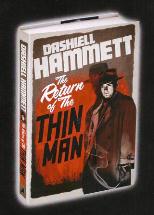
The introductions to the various treatments seem to almost gloat at the amount of money involved, though one is left having to guess how Hammett spent it. For the film rights to The Thin Man Hammett was paid $21,000 which we are told is the equivalent of $1,000,000 today, having already received $25,000 (another million plus change) for the rights to The Glass Key. He was then paid a further $20,000 (almost another million) for ten weeks work as a studio staff writer on After the Thin Man and, the following year employed as a studio executive on $1,750 a week ($85,000 a week today) before selling his rights in the characters Nick and Nora Charles (and Asta the dog) in perpetuity for $40,000 ($1,700,000) in 1937. (Presumably he got paid for the rights to The Maltese Falcon and even Red Harvest which was also filmed after a fashion).
So in the midst of the Great Depression, Hammett made the equivalent of several million dollars from Hollywood, not to mention, I suspect, selling quite a few books. Did Hollywood and MGM in particular need, or deserve,Hammett? He certainly behaved badly there by all accounts (and in some accounts was insufferably rude to other writers) and the sequels to The Thin Man did nothing to enhance his reputation as an important and influential crime novelist, as that reputation had already been secured by his books.
The advance publicity claims that The Return of the Thin Man is “The Lost Work”, which it clearly isn’t as these were film treatments and as they were made into films, they weren’t lost. Their importance to the Hammett ‘canon’ is also debatable as these stories were studio-driven (rather than author-driven) commercial franchises and arguably based on Hammett’s weakest book although a big seller in its day.
A UK readership might be slightly bemused as The Thin Man is probably the least shown (on TV) of Hammett’s work and I’ve never seen After the Thin Man or Another Thin Man – and I am very old and have a black-and-white television. On the other hand, I can quote most of the dialogue of The Maltese Falcon and am a great fan (as were my father, because of Veronica Lake, and my mother, because of Alan Ladd) of The Glass Key.
Still, if you are a dedicated Hammett fan and a ‘completist’ who wants to savour every precious fragment of his work, this is a must-have on your Christmas list this year and anyone concerned with keeping a flame burning for one of the most important crime writers of the 20th century should tip a fedora, or perhaps drink a cocktail, to the legendary Otto Penzler in America, whom I suspect was instrumental in bringing this book about.
The Killing of Hanneke Sloet
For reasons which I do not pretend to understand, Deon Meyer’s absolutely brilliant thriller Trackers failed to win any of the British crime writing awards last year, which makes me think that there must be something fundamentally wrong in the Ministry of Mystery Prizes.  Or perhaps it was the infamous Curse of the Ripsters at work. Just incase it was the latter, I have promised Deon – an exceptionally charming bloke by the way – that I will lift the curse by not saying anything nice about his latest book 7 Days published by Hodder this month. Or perhaps it was the infamous Curse of the Ripsters at work. Just incase it was the latter, I have promised Deon – an exceptionally charming bloke by the way – that I will lift the curse by not saying anything nice about his latest book 7 Days published by Hodder this month.
Therefore, I will say nothing about the plot, which revolves around the murder of corporate lawyer Hanneke Sloet (it seems that killing lawyers is taken quite seriously in South Africa), or rather why the police haven’t caught the murderer yet, because until they do, an unknown sniper aimsto shoot a policeman every day.
Immediately, the reader is plunged into a maelstrom of murder investigation, political corruption, racial tension and the clock is ticking for that all-too-human cop Benny Griessel who is also fighting his battle with alcohol on an emotional second front this time.
Of course, if any of the above, or the fact that Deon Meyer is a top notch plotter and has created one of the best ensemble (and multi-racial) casts of any modern police procedural series, has tempted you to nominate this book for a long-overdue award, then you didn’t read it here.
Whenever a friend succeeds
For reasons which escape me at this vast distance in time, I once found myself chairing a quiz where the contestants were young and enthusiastic crime writers and one of the questions I posed was: ‘Who is Edgar Box?’ – the author of a trio of excellent thrillers.
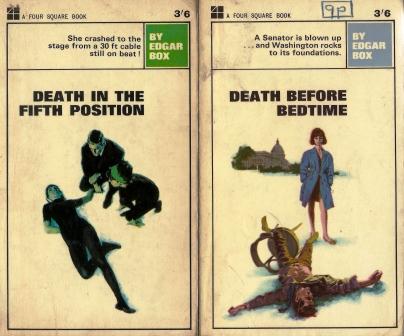 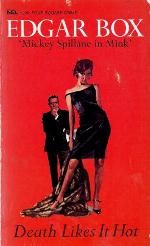
Only one contestant (a fresh-faced Ian Rankin) knew the answer; that Edgar Box was the crime-writing pen-name of novelist, essayist, dramatist, commentator and all-round intellectual heavyweight Gore Vidal, who died last month. Not that I was really surprised by that as these “sprightly, hyper-sophisticated little murder mysteries” (The Observer) were written between 1952 and 1955 and more or less forgotten about, or dismissed as ‘potboilers’, when Vidal’s career as a novelist took off for the second time with bestsellers such as Julian (1964), Myra Breckinridge (1969) and Burr (1974).
I had certainly never made the connection between Vidal and Box, discovering both at roughly the same time, around 1975, having been recommended Burr (then a huge best seller) by an American historian and finding a copy of Death in the Fifth Position in a second-hand bookshop. I quickly tracked down everything I could get hold of by ‘both’ authors, being fascinated by Vidal’s historical novels and shocked and amused by his hugely funny ‘fantasies’ (such as Kalki and Live from Golgotha); as well as intrigued by Box’s short series of posh American mysteries which featured Peter Cutler Sargeant III – a public relations man – as the detective.
With hindsight I am ashamed that it took me so long to realise that Edgar Box was Gore Vidal, for who else could have started off a murder mystery (Death Likes It Hot) with the opening:
The death of Peaches Sandoe, the midget, at the hands or rather feet, of a maddened elephant in the sideshow of the circus at Madison Square Garden was at first thought to be an accident, the sort of tragedy you’re bound to run into from time to time if you run a circus with both elephants and midgets in it. A few days later, though, there was talk of foul play.
I have subsequently read virtually everything Vidal wrote, including his quite brilliant memoirs (Palimpsest and Point to Point Navigation) and his history of three of America’s ‘Founding Fathers’ Inventing A Nation, published by Yale University in 2003 though not, disgracefully, in the UK. As a consequence, the man who famously quipped ‘Whenever a friend succeeds, a little something in me dies’ became something of a literary hero to me and I admit to being slightly carried away when, whilst being interviewed by Michael Gregorio for the website The Rap Sheet, I suggested that the idea for the Getting Away With Murder column had been born whilst drinking ‘fire-damaged gin’ in The Academy Club with my chums Auberon Waugh and Gore Vidal.
Now whilst it was true that I had discussed the idea with Bron Waugh in The Academy Club at a tasting of Bergerac Blanc, the rest I had made up. Amazingly, the story was repeated without question on The Gore Vidal Pages website (www.gorevidalpages.com) and though I am not convinced that Vidal knew he had a website, I was very proud to see my trivial and totally fictitious contribution to his legend there.
The website, bless them, not having a picture of myself, The Academy Club or Michael Gregorio, made do by illustrating the story with a picture of Vidal’s old chum Tennessee Williams having a drink which “was probably” fire-damaged gin.
Blacklist, Backlist
That most elegant and understated crime writer Andrew Taylor informs me that three of his ‘Cold War thrillers’ originally published between 1987 and 1990 are now available as e-books.

They are Blacklist, Toyshop and The Second Midnight, but his really exciting news is that his new novel, due out in February 2013, The Scent of Death, will be “set in New York in the last years of British rule”.
Now those were the days.
Blogs To Die For
After John Connolly and Declan Burke had asked “the world’s greatest crime writers” to nominate their Books To Die For it was only fitting that a response came from the world’s greatest bloggers on, and reviewers of, crime writing (who probably read more than the world’s greatest writers do). Consequently, a series of articles selecting their favourite crime novels have been posted by the world’s greatest bloggers on the Shots magazine’s very own Blogspot, the whole experience co-ordinated by Shots’ Techno-Queen Ayo Onatade.
As I clearly did not qualify as one of the world’s greatest crime writers for the Connolly-Burke book, I was delighted to be asked to be (even in an honorary capacity) considered as one of the world’s greatest bloggers and join the ranks of the contributors.
Big Hitters
 September seems to be the month these days when crime fiction publishers pull out the big guns. September seems to be the month these days when crime fiction publishers pull out the big guns.
Some, such as Bantam, could hardly wait – in fact they didn’t – launching the new Lee Child Jack Reacher thriller, A Wanted Man, on 30th August, though I doubt if fans of Lee, Reacher and (dare I sayit?) Tom Cruise will hold that against them.
 September is traditionally the start of the publishing party ‘season’ which at one time consisted of a cash bar and a plate of Twiglets in any of London’s less salubrious public houses the week before Christmas, but now seems to involve a three-and-a-half-month run-in at rather select venues. In other words, the season has become a marathon rather than a sprint, with considerable strain put on the waistline and the liver. Thankfully, inspired by the Olympics this year, I have insured I am physically and mentally prepared for the campaign. September is traditionally the start of the publishing party ‘season’ which at one time consisted of a cash bar and a plate of Twiglets in any of London’s less salubrious public houses the week before Christmas, but now seems to involve a three-and-a-half-month run-in at rather select venues. In other words, the season has become a marathon rather than a sprint, with considerable strain put on the waistline and the liver. Thankfully, inspired by the Olympics this year, I have insured I am physically and mentally prepared for the campaign.
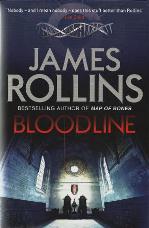 The traditional start to the season was always the launch, with lavish hospitality, of the new Dick Francis novel and this year will be no exception, for although Dick is no longer with us, his son Felix is doing a splendid job of continuing ‘the family business’ with his new racing thriller from Michael Joseph: Bloodline. The traditional start to the season was always the launch, with lavish hospitality, of the new Dick Francis novel and this year will be no exception, for although Dick is no longer with us, his son Felix is doing a splendid job of continuing ‘the family business’ with his new racing thriller from Michael Joseph: Bloodline.
I have some sympathy for Felix if he feels put out by the fact that whilst his Bloodline has been known about and anticipated for several months, rival publisher Orion have suddenly (well I’ve only just found out about it) pre-empted his launch by publishing Bloodline by American James Rollins, which as far as I can see is a ‘Quest’ thriller involving Templars in the 11th century, a lost mystical relic (the staff of Jesus Christ), modern-day Somali pirates and a fertility clinic in South Carolina, without a horse race in sight.
I am sure discerning readers will not be confused.
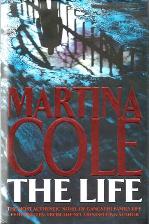
Hopefully I will have recovered from the launch of Felix’s Bloodline sufficiently to attend the party to be thrown in honour of Martina Cole’s new thriller from Headline, The Life.
This will be, I think, Martina’s 19th best-selling novel in a career which began – incredibly – twenty years ago this year with the publication of Dangerous Lady and which has seen her become probably the most successful female British crime writer of recent times.
By the Beard of Zeus
That iconic American television anchorman Ron Burgundy was always fond of exclaiming “By the beard of Zeus” but perhaps he may have change that slightly in the light of the arrival of publishing imprint Head of Zeus.
Although the headlines will almost certainly go to their publishing of a ‘new’ Dashiell Hammett (as reported above) in November,they have two other upcoming titles which fit nicely with the classical image conjured by their name.
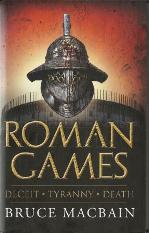 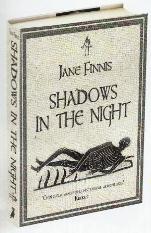
Roman Games by American academic Bruce MacBain is set in the Rome of the Emperor Domitian (81-96 AD if you have to ask) with no less a personage than Pliny the Younger investigating the murder of an Imperial senator.
Also set during the reign of Domitian, though it Britannia rather than Rome, Shadows in the Night by Jane Finnis sees the first in a series of history-mysteries to feature Aurelia Marcella (who runs a pub in Roman Yorkshire) which I believe has already been published in America, but is new to the UK.
The Long Hello
The Crime writing world has been stunned into silence with the news that prize-winning "proper" novelist John Banville, who famously finds writing crime fiction as Benjamin Black much easier, is to revive the fictional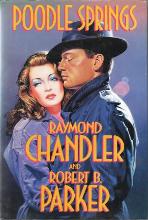 life of no less an icon than Raymond Chandler’s Philip Marlowe in 2013. life of no less an icon than Raymond Chandler’s Philip Marlowe in 2013.
Banville’s over-enthusiastic publishers claim: “there is no one better to bring Philip Marlowe back to life for the vast readership that loves noir fiction” but then the late Robert B. Parker’s publishers probably said something similar in 1989 when he was hired to complete Poodle Springs, although that didn’t exactly spark a massive Marlowe revival.
I also have my doubts about a “vast” readership of “noir fiction” lovers out there desperate for a Lazarus-like awakening of one of the most famous fictional detectives in crime fiction. For a start, I do not normally link the work of Raymond Chandler to the description “noir”. Hard-boiled, wise-cracking, tough – all those things, yes, but “noir”? McCoy, Cain, Woolrich, Thompson, Goodis, Willeford, Ellroy and Vachss – they’re “noir”; but Chandler? Discuss.
Angels Everywhere
As is customary, I always like to report sightings of my own books whenever they have escaped into the wild and this summer has seen one soaking up the sun on the island of Tenerife…

whilst another was spotted being read in the queue for the impressive Olympic stadium in the rejuvenated Stratford area of London.

Pip! Pip!
The Ripster
|